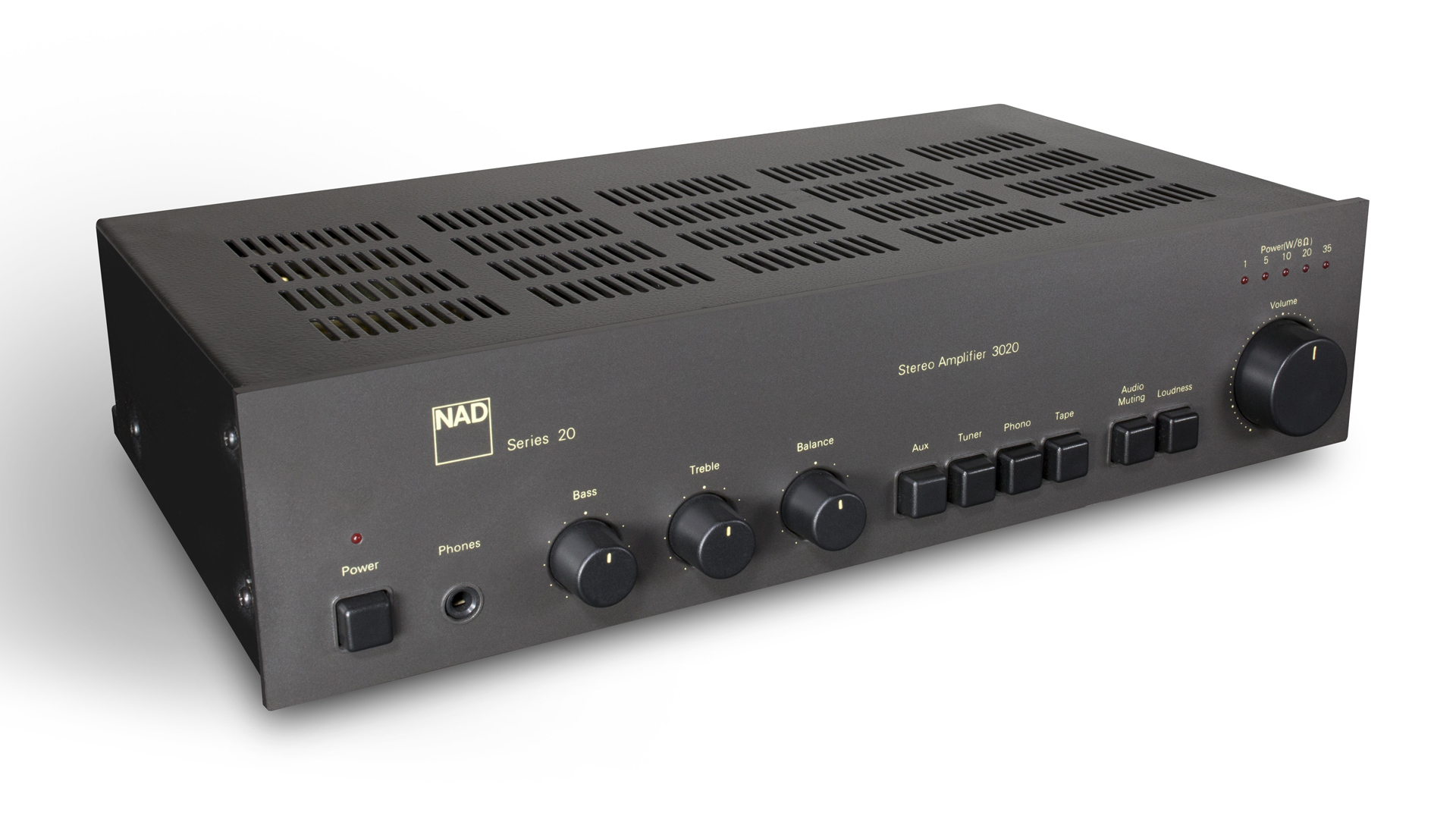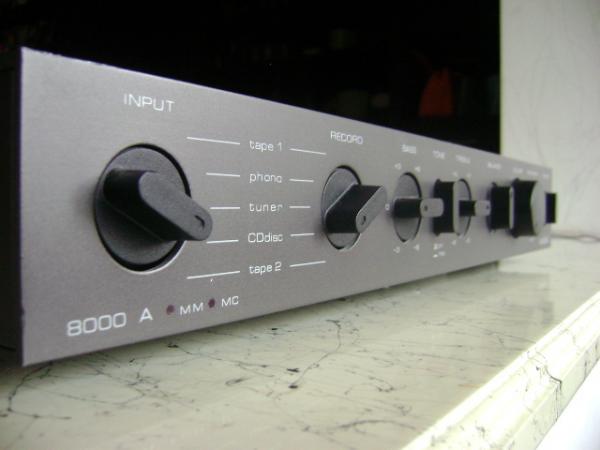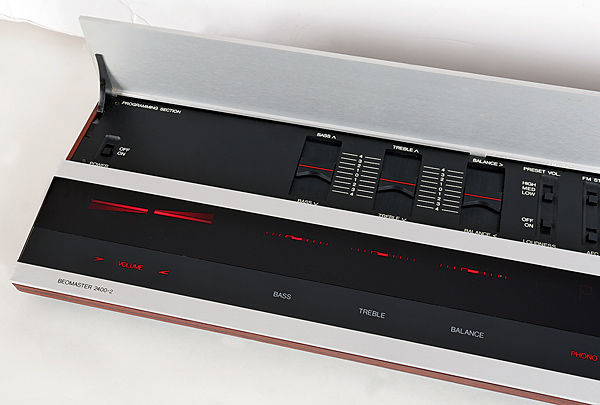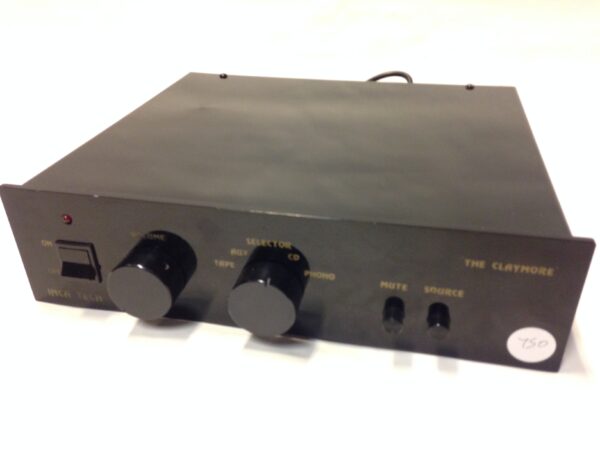It was difficult to get a competent affordable amplifier in the late 1970s. For showroom attractiveness, brushed aluminum-fronted Japanese versions with tone controls and power meters flooded the market. Sound quality had received little attention; most sounded bland and inoffensive at best, and terrible at worst.
New Acoustic Dimension, a relatively new firm, saw a need for something different and developed the 3020 integrated. It was a cost-cutting, lightly revised variant of the well-known NAD 3030. It featured an unfashionably tiny shape, produced a modest 20W per side, and lacked the bells and whistles of its Japanese competitors. Worse, its flimsy front panel was finished in a drab dark grey, which was scarcely fashionable in summer 1979. Made in Taiwan, it didn’t feel as silky to use or appear as graceful as its Japanese counterparts, but it did have one advantage: it was only £59.95.
The 3020 was so unassuming that it could easily have vanished, never to be seen again – but those who heard it knew it was something unique, because to the outstanding circuit design and generous power supply. It had a wealth of extremely useful features that made it an outstanding real-world design, rather than being adorned with fripperies like competitor Japanese amps. Preamp outputs and power amp inputs, for example, were found around the back on the innovative rear panel, one of which was subsonically and infrasonically filtered (Normal In) while the other (Lab In) was direct. There was also a button for NAD’s revolutionary Soft Clipping circuitry, which allowed the amp to run at maximum power without damaging its loudspeakers — as seen by the amp’s single fascia-mounted LED power meter, which had the ’35W’ sector nearly always glowing!
On first impressions, the 3020 was unlike anything else in its price range. It sounded like a high-power, high-quality, high-priced integrated, one of those epochal goods that appears out of nowhere and rattles the market. It was a remarkable achievement for any amplifier, but for less than sixty quid, it was almost amazing. It was unexpectedly vibrant and powerful, despite being undeniably colored — with a big, rich bass, a warm bloom throughout the midband, and an unnaturally silky treble. This meant that, given a cheap turntable and mediocre speakers, its musicality and warmth might come through, while the front end’s deficiencies were hidden. When used with a high-quality source, it accomplished the exact reverse, maximizing the turntable’s power and detail.
The NAD’s big-hearted sound was aided by its remarkable real-world speaker driving ability, which belied its modest rated power of 20W (into 8 ohms). Its powerful power source could pump current when it was needed, as evidenced by measurements that showed it quadrupling its output power into 2 ohms. It was said to outperform a variety of Japanese 100W super amps, and some reviewers even tried it with nightmarish loads like Linn Isobariks with some success!
It swept the board for several years, taking sales from all over the country and winning every award in the industry. Customers remained enthusiastic despite multiple price increases and the entry of some talented competitors. Then there was the ‘A’ version, which had a switchable MM/MC feature. Even with considerable moving coils, the NAD’s phono stage sounded surprisingly nice, despite being done on the cheap. Finally, in 1985, the £129.95 3020B with a speaker impedance selector and enhanced binding posts was released. The 3120, a 3020B without tone controls and a power meter, was also introduced. Surprisingly, for a ‘minimalist’ amplifier, the volume button was maintained — allegedly due to a manufacture oversight!
Things were never the same until the appearance in 1985 of the larger £149.95 3130, which was hailed as the real successor to the 3020. The £119.95 3020i that followed was a cheaper, shoddier contraption that lacked the warmth and punch of prior generations. The very first 3020 variations are said to sound the greatest, although whether this is merely hi-fi mythology is anyone’s guess.
Why should you buy a used NAD 3020 now? They’re still relatively affordable and numerous, and their well-known versatility hasn’t lost its allure. For tweakers and bi-ampers, the split pre-power feature is a godsend, and it even allows you to use the amp solely as a (quite capable) phono stage. There are few better classic budget amplifier selections for audiophiles with less than £150 to invest.







